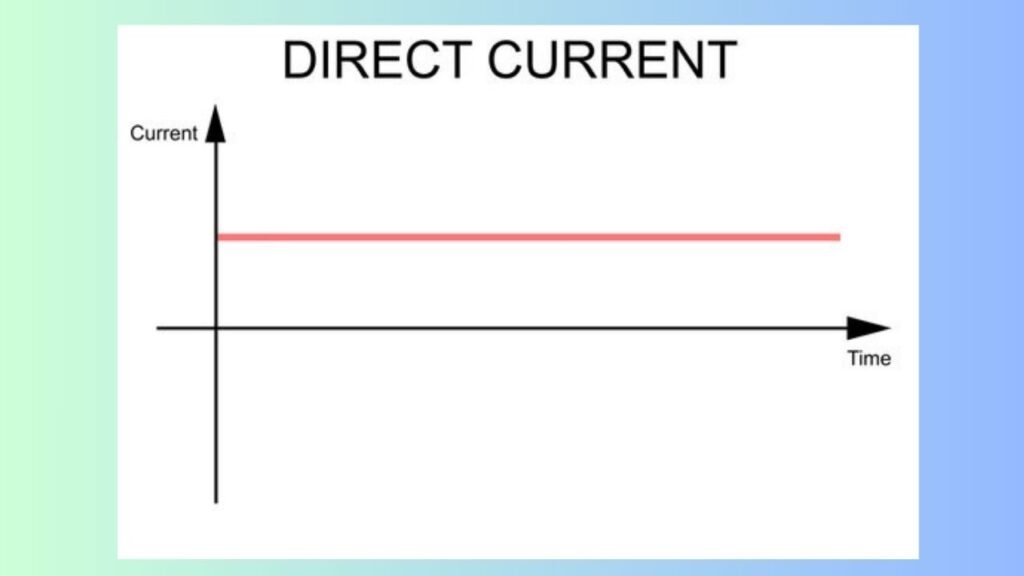Introduction of Electric Current
Electric Current is a Flow of Elctronic Charged Particles, such as Electrons or Ions, that move through an Electrical Conductor or Space. It is defined as the net rate of flow of Electric Charge through a Surface. Electric Current is the Movement of Particles, Which begins when an External Voltage is applied to one end of the Conductor. In turn, an Electric Field is Produced on the Negatively Charged Electrons which are attracted towards the Positive terminal of the External Voltage.

Table of Contents
ToggleWhat is a Electric Current
Electric Current is the rate of flow of Electrons in a Conductor. The SI unit of Electric Current is Ampere and is the amount of Electricity flowing through the Circuit. It is Measured by Ampere (A). The Larger the Value in Amperes, the More Power will Flow in the Circuit. The Flow of Electrons across a Conductor is Known as Electric Current. The use of Symbols to represent Electric Components is Convenient. A Circuit Diagram can be used to represent an Electric Circuit using these.

Types of Electric Current
Their are two main type of Electric Current
- Alternating current (AC)
- Direct current (DC)
What is a Alternating Current (AC)
Alternating Current (AC) is a type of Electric Current in Which the Direction of Flow of Electrons Changes back and Forth at Regular Intervals or Cycles. The Current Flowing in Power lines and Coming from a Wall outlet is Normal Household Electricity Alternating Current. Alternating Current is an Electric Current that Periodically Reverses Direction and Constantly Changes its Magnitude Over time, Unlike Direct Current, Which Flows in Only one Direction.

What is a Direct Current (DC)
Direct Current is One-Directional Flow of Electric Charge. An Electrochemical Cell is a Prime Example of DC Power. Direct Current May Flow through a Conductor Such as a Wire, But Can also Flow through Semiconductors, Insulators, or even through a Vacuum as in Electron or ion Beams. Direct Current refers to the Unidirectional Propagation of Electric Charge. It is Commonly Used in Batteries and Solar Cells. Thomas Alva Edison invented DC Current in (1870) Electron flows only travels in one Direction , Which allowed him to Power Numerous Complex Electrical Systems

Benifits of Electric Current
Electric Current is an Essential Part of Our Modern Life and important to the U.S. Economy. People use Electricity for Lighting, Heating, Cooling, and Refrigeration and for Operating appliances, Computers System, Electronics Machines, Machinery tools, and Public Transportation Systems Etc. Electric Current is the Flow of Electron through a Complete Circuit of Conductors. It is used to Power everything from our Lights to our Trains. In these Activities, Students will Explore Different Kinds of Circuits and Investigate What is required to Make a Complete Circuits.

Advantages of Electric current
Electric Power has Many Advantages Domestic and industrially, as Most of the Equipment run by Electric Power. Brightness in the night is Only Possible by the use of Electricity. Almost all the Factories and Industries are running due to Electric power. The Advantage of Electric Power is its reliable and Uninterrupted Supply runs the Equipment Efficiently and Continuously. The Transportation of Electricity is easy once the Transmission lines are Functional. They work for Years and need no or very less Maintenance. The Invention of Electric Power is one of the best Inventions which have changed human life drastically. It allows people to do more leisure activities
Disadvantages of Electric Current
Traditional Method of Life Generating Electrical Energy, Coal is Burned to Generate Heat Which is then Used to Boil Water to Generate Steam. The Steam Produced is Used to Drive turbines Which in turn Generate Electricity. This is a very Ancient Method of Generating Electricity Which Produces a lot of Air Pollution as a by product. Due to Burning of Coal, Carbon Monoxide Gas, Carbon Dioxide, Various Oxides of Sulfur and Nitrogen Flow into the Atmosphere which Badly Pollutes the Environment. Since Carbon Dioxide is a Greenhouse Gas and its Excessive Presence in the Atmosphere Increases the temperature of the Earth.
Disclaimer
The information provided in this discussion on “What is Electric Current” is intended for general informational purposes only. The content is not exhaustive, and specific details may vary based on regional standards, educational backgrounds, and technological advancements. Readers are encouraged to consult relevant textbooks, authoritative sources, and qualified professionals in the field of physics or electrical engineering for precise and up-to-date information.
Thanks for Visiting. Have a Good Day
This Content is Amazing

Resources of Weather || Defination || Types || Benifits || Easily Explanation
March 30, 2024
No Comments
Read More »

Resources of Water || Defination || Types || Benifits || Easily Explanation
March 24, 2024
No Comments
Read More »

Properties of Soil || Types || Conversion || Structure || Easily Explanation
February 28, 2024
No Comments
Read More »


Metals and Nonmetals || Defination || Types || Uses || Easily explanation
February 22, 2024
No Comments
Read More »

Natural Phenomena || Defination || Types || Causes || Easily Explanation
February 17, 2024
No Comments
Read More »
Web Stories
प्रकृति में शुद्ध पानी के कितने स्रोत है हमें पिने के लिए शुद्ध पानी कहा से मिलता है आइये जानते है
By sciencestudy.fun
क्या आप जानते है की प्रकृति में मिट्ठी का क्या महत्व होता है मिटटी की संरचना कैसी होती है कैसे पेड़ और पौधे मिटटी से अपना खाना बनाते है आइये जानते है
By sciencestudy.fun
क्या आप जानते है बारिश के बाद ही आकाश में इन्द्रधनुष कैसे बनता है क्या विज्ञानं है इसके पीछे
By sciencestudy.fun






This piece offers a fresh perspective on the topic. ❤️
Increase your earnings Top Affiliate Marketing
Increase your earnings Affiliate Marketing
Earn passive income AffRip
Learn to make money online Affiliate Marketing Community